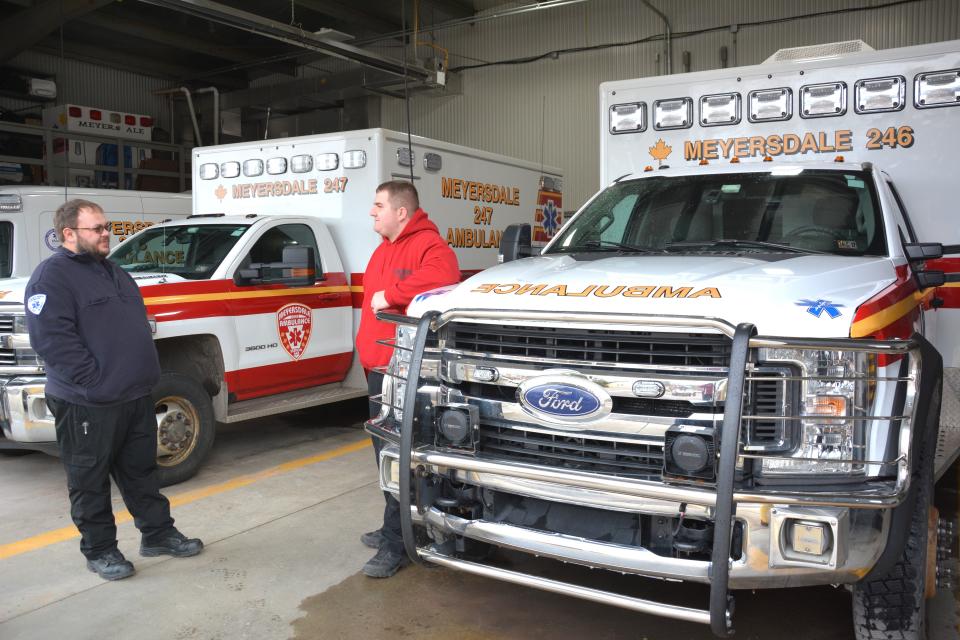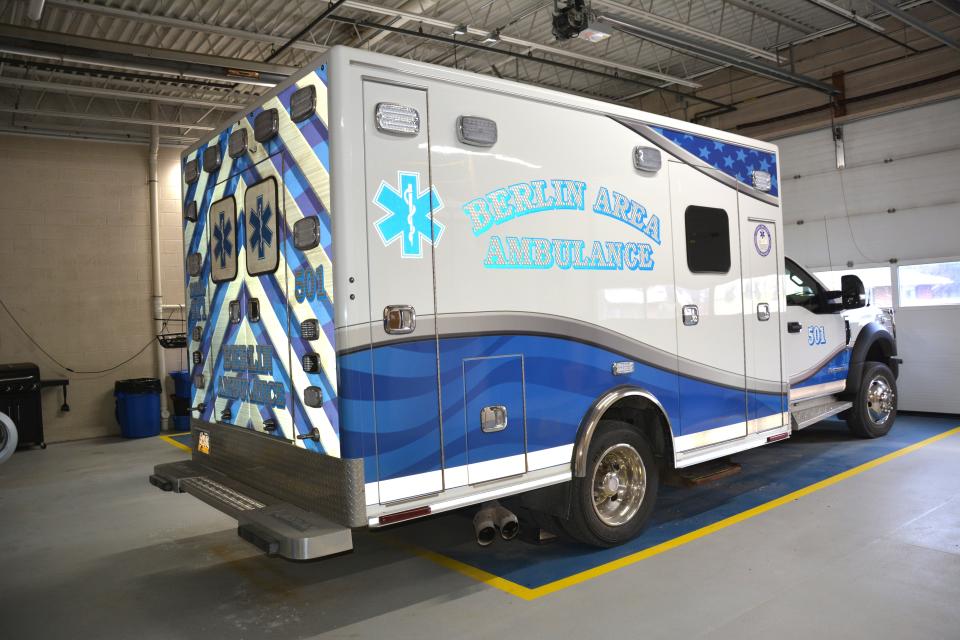Somerset County EMS trying to keep paramedics and EMTs
- Oops!Something went wrong.Please try again later.
Gov. Josh Shapiro traveled to Johnstown Jan. 22 to discuss his plans to propose a $30 million increase for Emergency Medical Services funding in the 2024-25 budget through the Fire Company and Emergency Medical Services Grant Program.
The funds would double last year’s investment of $30 million to a total of $60 million. EMS companies can use these grants for many things including equipment, facilities upgrades, training, recruitment, and more.
“I’m going to propose in my next budget doubling the fire and EMS grant program, which this department has taken advantage of in the past," Shapiro said in a press release. "Ideally, we’re going to increase the amount that’s coming here. And I think we have to look at ways to see what we could do on salary and benefits for our professionals who are out trying to save lives every single day.”
Effective Jan. 1, the Department of Human Services will reimburse EMS providers for every loaded mile of a trip at $13.20 per mile, according to the press release. Effective with the increase in reimbursement, mileage reimbursement now begins at the point an individual is loaded into the ambulance for transport. Before this change, mileage reimbursement occurred only after the first 20 miles of transport.

Is the money needed?
Somerset County's emergency medical officials agree that sustainable funding is needed to keep paramedics and emergency medical technicians staffing the ambulance services.
"Services in the county aren't able to staff a paramedic. Staffing has too low a pay," said Terry Ruparcic, president of Somerset County Ambulance Association. "What people don't realize is how EMS services are spread so thin in Somerset County. Somerset County has six ambulance services left. They're folding."
The six ambulance services are: Meyersdale, Jennerstown, Berlin, Conemaugh Township, Northern EMS and Somerset.
"The long-term issue is to have money for the paramedics. They can go on be a nurse and make more money," said Chris Weyant, manager of Berlin Ambulance Association. "A lot use this as a stepping stone to another career. Part of the issue is very few EMTs have one job."
Berlin has 20 staff members and the EMS serves not only the borough, but the surrounding rural communities.Weyant said Berlin receives money from 23-25% of the ambulance association membership "when we serve 100% of the population."
"We write off so much money because we'll not be able to collect on it (from the insurance companies)," he said.

Meyersdale Area Ambulance's president, Ken Marteney, said his service has the same problem.
"We lose people after they go to school because they're bettering themselves. Paramedics are a critical need and EMTs are very close to that critical need," he said.
Meyersdale's ambulance service has 12 staff members and serves nine municipalities in the southern Somerset County area with a budget of about $580,000.
Marteney said financial support is definitely needed.
"We need money to go toward payroll, insurances, fix ambulances and keep the building up to date. We need the ability to offer a retirement fund," he said. "We still have people who will go on to be a nurse, but there is the percentage of other people if we could keep them. It comes down to is, we need to have municipal support."
Paramedic school needed
Ruparcic said Johnstown Area Regional Industries (JARI) sponsors an EMT class at Conemaugh hospital in Johnstown.
"To be a paramedic, it takes a year at a cost for training at $8-$9,000. It takes hundreds of hours of clinical time – on the ambulance, in the emergency room, operating room, labor and delivery, everywhere in the hospital. It's not just a classroom setting," he said. "It's time-consuming. And the people are working two and three jobs."
Ruparcic said there are only three students in the class this year.
"When I went through the training more than 20 years ago, there were 38 of us," he said. "There were five last year. We're not looking at five on the street after they're through. Some of them go into other things."
Joel Landis, Somerset County Emergency Management Agency director, feels part of the concern for the low number of paramedics in Somerset County is the testing process. He said if the Department of Health paramedic certification testing would be Pennsylvania's standard test, not a national test, more potential paramedics would be able to pass the test.
"My concern is we have such a high failure rate because of the testing," Landis said. "That needs to turn a light bulb on somewhere."
Should they combine?
Weyant and Marteney said getting the municipalities involved to help with the funding would help the ambulances have sustainable money to support the services.
"We need sustainable funding that needs to come from legislation action or municipalities," Weyant said.
"It's very difficult to keep doing what we're doing. There is no retirement program. There should be a fire/EMS tax to put toward maybe a municipal countywide service," Marteney said.
"The ultimate goal for me is a countywide municipal ambulance service with municipal government and municipal insurance funding provided by each municipality, managed as one, with a board to run that organization," he said. "We'd have professional paramedics and have them be able to have a career. We could have a robust education system for EMTs and paramedics in the county. Build it from the ground up and we'll have the services we need."
Shapiro Administration announces $1 million in tuition assistance for EMS professionals
HARRISBURG ― Today, Acting Secretary of the Department of Health Dr. Debra Bogen announced the Shapiro Administration has launched a $1 million tuition assistance program to help recruit and retain Emergency Medical Services (EMS) professionals.
“Emergency medical services professionals are an essential part of the health care system,” said Bogen in a press release. “Knowing that you will have well-trained and qualified individuals arriving to your door 24/7 in the event of an emergency is a safeguard that we want for all Pennsylvanians. The Shapiro-Davis administration is committed to helping people enter and remain in this vital profession, and this tuition assistance program supports these workforce efforts.”
Administered by the Department of Health, this program is funded by $1 million from the Fireworks Tax Act each year for the next three years. Pennsylvania residents who obtained a Pennsylvania state certification as an Emergency Medical Responder (EMR), Emergency Medical Technician (EMT), Advanced Emergency Medical Technician (AEMT), or Paramedic after July 1, 2023, are eligible to have a portion of their tuition reimbursed.
In addition, Pennsylvania licensed EMS agencies are eligible to receive reimbursement of expenses related to recruitment and retention efforts, up to $1,250 per fiscal year.
This tuition reimbursement assistance builds on the Shapiro Administration’s support of Pennsylvania’s EMS industry after securing $20.7 million in the 2023-24 budget to increase mileage rates for ambulance services, ensuring that EMS workers and first responders are properly reimbursed for the critical care they provide. The investment in EMS protects critical access to health care in a state where EMS agencies respond to nearly 24 million 911 calls each year and 26% of the residents live in rural areas.
This article originally appeared on The Daily American: Somerset County needs better funding to keep paramedics, EMTs

